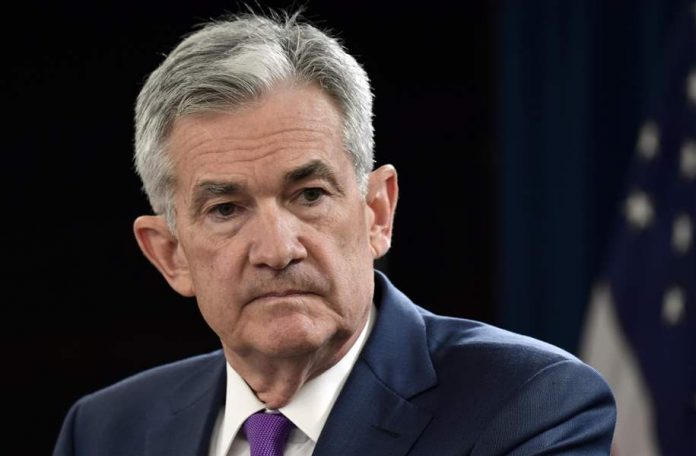Stocks opened higher this morning as the shift in sentiment continued.
Investors think that we’ve got COVID-19 on the run. And based on this week’s numbers, that seems to be true.
Today, though, the ongoing pandemic has fallen to the wayside of a newly announced $2.3 trillion in loan commitments from the Federal Reserve.
“Our country’s highest priority must be to address this public health crisis, providing care for the ill and limiting the further spread of the virus,” said Fed Chairman Jerome Powell in a prepared statement.
“The Fed’s role is to provide as much relief and stability as we can during this period of constrained economic activity, and our actions today will help ensure that the eventual recovery is as vigorous as possible.”
The announcement was made immediately after the U.S. government reported that 6.6. million new jobless claims were filed last week.
In revealing its $2.3 trillion loan plan, the Fed wanted to prevent a payroll-related panic.
So far, it’s working.
As of midday, the Dow and S&P are up almost 2%. The Nasdaq Composite has risen by almost 1%.
To some analysts, the loan programs are a bullish sign, indicative of greener pastures in the not-too-distant future.
“I feel better today,” said “Mad Money” host Jim Cramer.
“The Fed is on its game. This is what is needed because we’ve got to fight off a depression. We’ve got to get America open for business.”
By offering up $2.3 trillion to American companies and municipalities, the Fed’s providing stability to a flailing economy.
It’s “all hands on deck” to avoid a depression. During the financial crisis, Cramer argues that the Fed spent far too long shuffling its feet. Moreover, that the U.S. can’t afford its central bank to make the same mistake again.
“I think this is Jerome Powell being so ahead of the game versus what we saw in 2008, where there was just a lot of bickering,” Cramer added.
“Powell’s the man.”
The $2.3 trillion will be arriving on top of the $350 billion small business loan program that’s part of Congress’ $2 trillion economic stimulus package. President Trump wants another $250 billion added to the existing program, bringing it to $600 billion in total if allowed.
With the government offering up so much cash, inflation quickly became an obvious concern to investors and analysts alike.
Powell addressed that in his statement this morning, saying that at present, he’s not worried about inflation. Citing the $600 billion released via quantitative easing in 2008, Powell argued that analysts feared hyperinflation back then as well. Instead, a decade of low inflation followed.
However, the current situation is far different from what it was back in 2008. Deficits have only gotten worse over time. When the Fed prints more dollars, deficits can certainly become a source of inflation.
After today’s announcement, the Fed will grow money like never before.
The currency markets have been watching this scenario unfold for years. Now, a $2.3 trillion payload is on its way.
And inflation will be coming with it.
Powell knows it, too. He just can’t come out and say it for fear of causing mass hysteria.
After all, it’s the Fed’s job to safeguard the value of the U.S. dollar. Powell’s not going to admit that his new plan will cause it to plummet.
So, will the loan program help the U.S. avoid a depression? Yes, absolutely.
But it could also end up making a recession last much, much longer. There’s nothing wrong with government stimulus. The $350 billion small business loan plan is a home run in every sense of the word. It’s designed intelligently and requires accountability from companies that accept it.
The Fed’s $2.3 trillion sledgehammer of cash – of which we don’t know the details quite yet – should prove to be far less “finessable” by comparison. It represents a major overstep from Powell & Co. and, god forbid, the genesis of sky-high inflation.
We might not see that materialize any time soon, of course, but mark my words:
Without a plan to “put the genie back in the bottle,” inflation will be here to stay when it arrives.
Hopefully, I’m wrong. But if I’m not, investors need to prepare for the worst.
Even if that means loading up on commodities – a mostly forgotten asset class that often rises alongside inflation – in the coming months.








